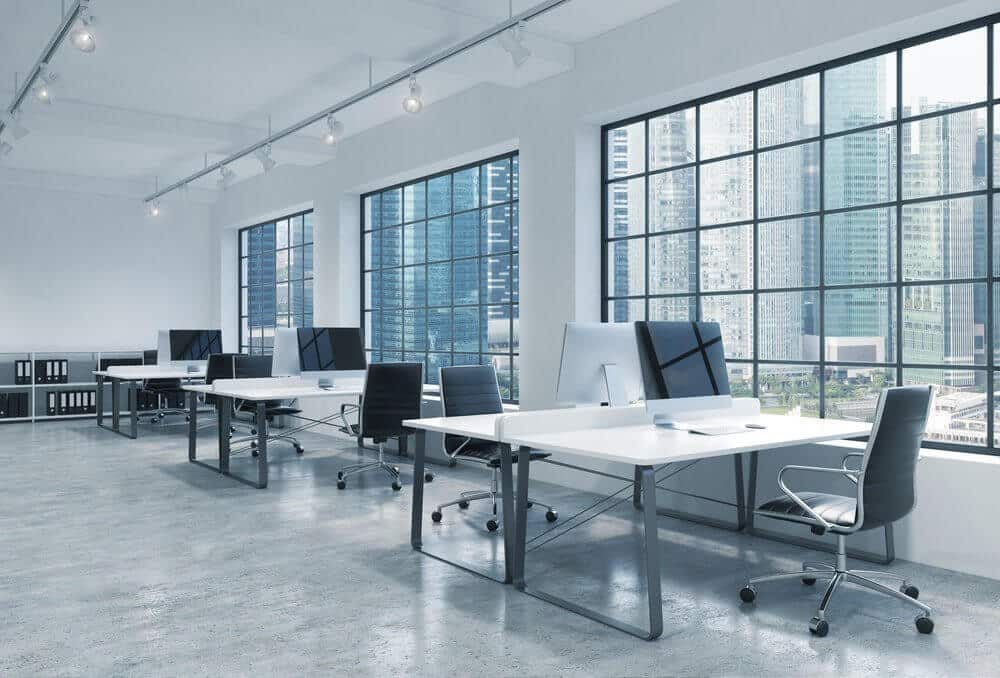The results are in, and open-concept office layouts are officially controversial. Briefly the nexus of enthusiastic buzzin office-dwelling industries across the country, the open concept movement has been met with significant pushback in the last few years, some of it quite vitriolic. Depending on the sources they stumble upon, people researching the topic online could come away thinking the design is the best thing since sliced bread—or about as conducive to productivity and happiness as a medieval torture chamber.
For facility managers and other seating stakeholders, the discussion largely boils down to one question: will an open concept work for my office? And while the answer will largely depend on your industry and office square footage, it is worth understanding the pros and cons—and the tools that can enhance the experience—before diving deeper. If you’re considering an open office layout, keep the following arguments in mind.
The case for open-concept: communication, feedback and savings

If the roles in your office don’t require much in the way of teamwork, collaboration or interpersonal communication, it’s probably better to forego an open layout, since these interactions are precisely what the design is supposed to draw out. Dollars to donuts, the heads-down workplaces with a focus on individual productivity that implement open-plan layouts are a big reason the concept draws so much controversy.
The inverse, of course, is that open designs can be great for offices that do thrive on the easy transferal of ideas between coworkers. Facebook, a company built on a foundation of people sharing information, famously turned their new space into a massive open-concept, a move designed to enhance “frictionless work” within its walls. The same idea applies on a non-Facebook scale: a lack of cubicle walls makes it that much easier to bounce ideas off your neighbor, hold impromptu gatherings at a given desk or ask a colleague for help. Following that logic, creative fields like content writing and graphic design are typically suited to the open-concept environment.
Open designs also represent a significant savings opportunity for organizations. Since the design leaves more square footage per employee, companies with elastic hiring needs—call centers and businesses that do a lot of seasonal hiring, for example—may also appreciate the change from an economic perspective. When an open design is used in tandem with sophisticated software that offers at-a-glance insights, you’ll be better able to gauge the strength of your office layout—and everyone benefits.
The case against: distraction and (lack of) productivity

Companies that don’t need to facilitate much teamwork or communication to get the job done may not benefit from an open office design. Just like you wouldn’t buy a sports car to haul firewood, form must meet function, no matter what larger trends might say.
Accordingly, places where employees need to focus should likely think twice before making the switch to an open plan. The visual distraction of an open space and various noises of coworkers, typing, conversation and food preparation can all have a very real impact on productivity, an operational downside that only the biggest real-estate savings can justify.
There’s nothing wrong with sticking to the status quo, or with using metrics-based planning and analysis to uncover an alternative plan that does work. Strategies that pay attention to office dynamics and offer hybrid solutions can help stakeholders sidestep the productivity losses (or employee grumbling) that may result from an open design. An open-concept design is far from the only game in town, after all—chances are there are still plenty of changes you can make to turn seating into an asset instead of an afterthought.
As you formulate your office layout, work with the management software that can adapt to your plans. Request a free demo of OfficeSpace today.
Photo Credits: Shutterstock / ImageFlow, Shutterstock / Monkey Business Images, Shutterstock / Mooshny





